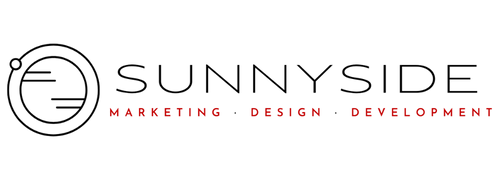
Photo via Unsplash
What is more effective for your next online advertising campaign? Social media or traditional paid search? Read on to learn more about how each strategy works, the benefits of each, and how they can work together to help you achieve your marketing goals.
Advertising on Social Media
Social media ads are an ideal way to gain new followers, make announcements, drive traffic to your webpage, and reinforce your brand identity. You can target specific demographics and have your ad appear on those users’ feeds. Social media is a visual medium, and photos, videos, and infographics are all excellent ways to boost user engagement.
Twitter Ads
Promoted Tweets, Accounts, and Trends are three types of Twitter Ads that are perfect for product announcements, breaking news, and product highlights.
First, Promoted Tweets are an effective tool to get your message in front of the right audience. They look similar to regular Tweets, but will appear when users search for related topics and hashtags, as well as on the timelines of users in the targeted demographic. Use these to drive website traffic, draw attention to promotions and sales, and raise brand awareness.
If you are interested in growing your number of Twitter followers, Promoted Accounts is a tool that can help. Twitter suggests Promoted Accounts to reach users who are part of your target market but do not currently follow you.
Finally, Promoted Trends is a tool used to increase awareness of a product, service, or event. Promoted Trends appear to users in the Trending Topics list on their Twitter feed.
Facebook Ads
Facebook Ads are an effective choice for businesses wanting to gain new followers quickly, reinforce branding, target specific audiences, and drive website traffic. Facebook allows you to target users by age, location, and interests, letting you spotlight your brand directly on the news feeds of a highly-targeted group.
With more than 500 million active accounts, Instagram now has more users than Twitter. One advantage of paying for Instagram ads is that it allows you to include hyperlinks in your posts, which is not a feature that is included in organic use of the platform. Use Instagram ads to build community among your followers through the use of beautiful, highly-visual posts.
Pinterest Ads look similar to regular pins, but they offer better targeting and increased visibility. You have control over the user groups that will see the Pins. Promoted pins are a very effective way to market to customers who are already engaged with your business. Pinterest provides examples of successful campaigns by national companies that are sure to inspire your next social media marketing initiative.
Snapchat
Snapchat reaches 41% of Americans between the ages of 18 and 34 years old, according to their own data, making this a very effective way to build brand awareness and loyalty. Snap Ads are vertical videos that look like regular snaps. What separates them from regular Snaps is the ability to swipe up. By swiping up, the user can access additional content provided by the brand, including articles, longer videos, and mobile sites. Click-through rates on Snap Ads average 5 times higher than other social video ads.
Additionally, Snapchat Geofiters are a fun way to add branding to your next conference or event. You choose the artwork, geographic location, and time period you want your filter to run. Users can then add your branded filter to their Snaps while at your event.
Another interactive paid feature of Snapchat is Sponsored Lenses (referred to by its users as “filters”). This is the well-loved, signature feature that makes it look like its user has a puppy dog face or lasers shooting out of his or her eyes. Now, Snapchat allows businesses to create a unique Sponsored Lens that aligns with your company’s logo, mascot, or more, so your fans can transform themselves using your company’s design. The platform’s internal data suggests that users interact with a Sponsored Lens for an average of 20 seconds! This is nearly twice as long as the average metrics for Facebook’s video views or comparable ads offered by other platforms.
Paid Search Advertising
Google AdWords
Google AdWords is the most used and most powerful PPC provider. Google does most of the work for you by pinpointing users who are already searching for keywords that are related to your product or service. You get to choose the search terms that trigger your ad to appear. Selecting the right keywords for your brand and the interests of your target market is the most important factor to achieving success in Google AdWords. Engaging ad copy is also essential to success. Google will put your ad in front of interested users, but if the copy is poor or your landing page is not relevant to the ad itself, your results will suffer.
Bing and Yahoo! Ads
When it comes to paid search ads, Google is not the only game in town. Businesses are finding success using paid search ads on Yahoo! and Bing. Bing has less competition than Google and it’s more cost effective, averaging 33.5% lower overhead than Google. Bing ads have different targeting features, as well. Yahoo! and Bing have a deal that allow search ads to appear on both search engines called the Yahoo! Bing Network. Like Bing Ads, they are less expensive when compared to Google AdWords. If you are already running an ad on Google AdWords, and want to see how it performs on Yahoo! and Bing, you can easily import your existing ad’s content to the other platforms.
How effective are they?
Google AdWords ads are known to have a high return on investment. According to Google, when following best practices, you can make $2.00 for every $1.00 spent on AdWords. Bing has a dedicated page that details their customer success stories, if you would like to learn more.
Social media is also an effective, low-cost method to reach a target market who are already interested in your message. Paid ads can generate clicks, app downloads, likes, and more. All of this, in theory, should increase your reach and boost your bottom line. Facebook, Snapchat, Instagram, Pinterest and Twitter all have pages that share stories of their customers’ advertising success, and you can easily find case studies for the performance of e-commerce, B2B, and non-profit ad campaigns.
How Search Marketing and Social Media Ads Complement Each Other
If you have the budget for both, social media ads and traditional PPC ads are very effective when used together. When using the traditional “sales funnel,” Facebook and Twitter ads allow you to target specific audiences early in the funnel and drive interest with highly visual posts. Google AdWords facilitate conversions by targeting users who are already searching for terms that relate to your ads.
The Power of Remarketing
Remarketing is a powerful feature provided by most PPC services, whether they are the traditional or social media type. Facebook calls this a “pixel”. Twitter and Google both refer to this simply as a “website tag”. Whatever term you use to describe this function, it’s important to understand what it means and just how critical this is to your ad’s long-term success.
The practice of remarketing uses a tracking code to place “cookies” on the computer of users who visit your website. These cookies allow your ad to appear on a large number of Google partner sites, including YouTube and Facebook. This is such an effective tool, because potential customers who were interested enough to visit your website will continue to see your remarketing ad on other webpages they visit.
Both search engine and social media ads are essential digital marketing tools to increase sales and awareness of your product or service. Contact SunnySide, and let us help you optimize your digital advertising campaigns.

I am looking for an ad example to use for my Facebook Business Page to target locals. Income Tax season is coming very soon.
Chris
Owner CEL Financial Services
Registered bonded California CTEC Tax Preparer
Income Tax Preparation Santa Paula Fillmore Piru http://www.taxprepfillmore.com/income-tax-service-areas